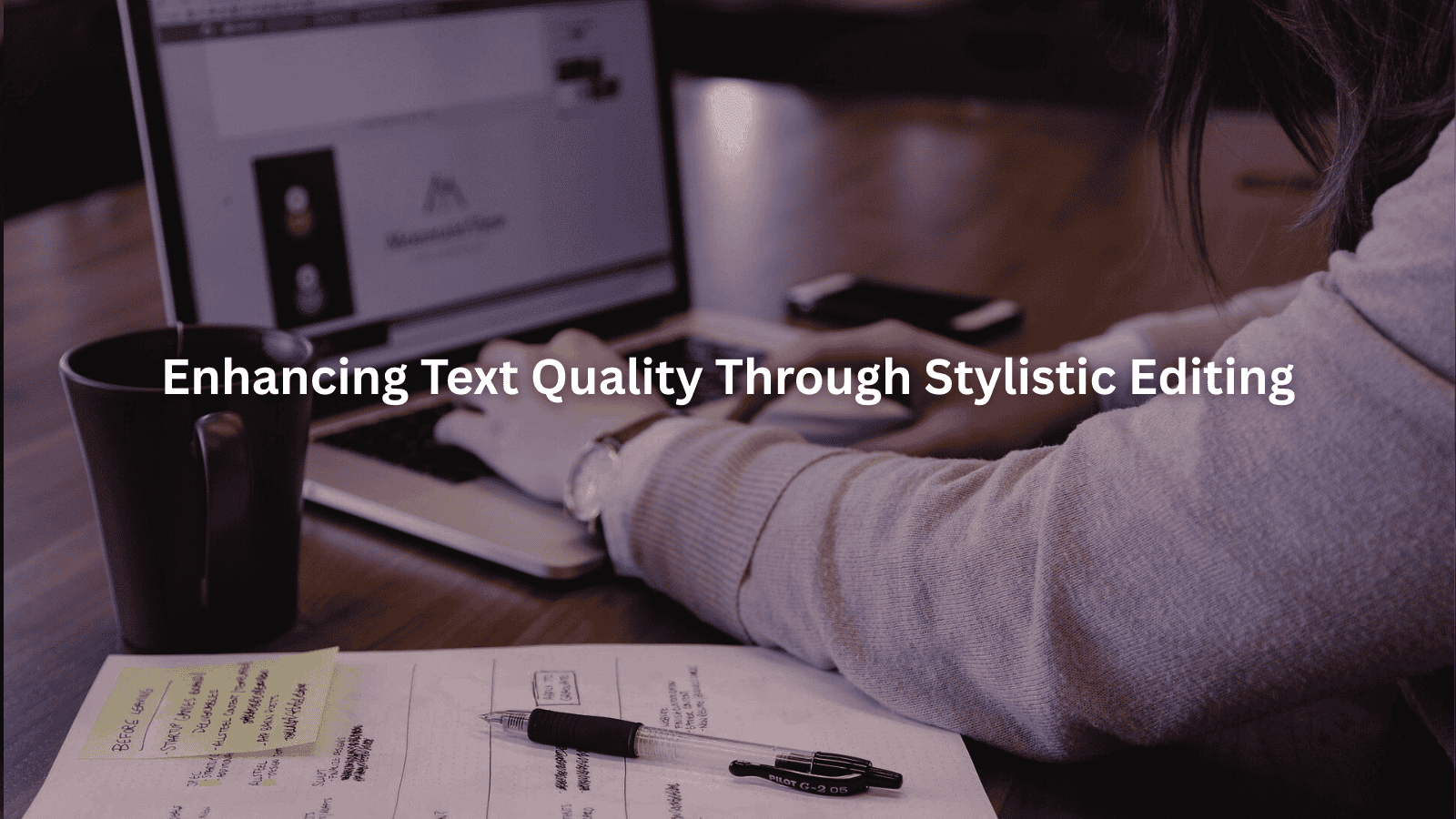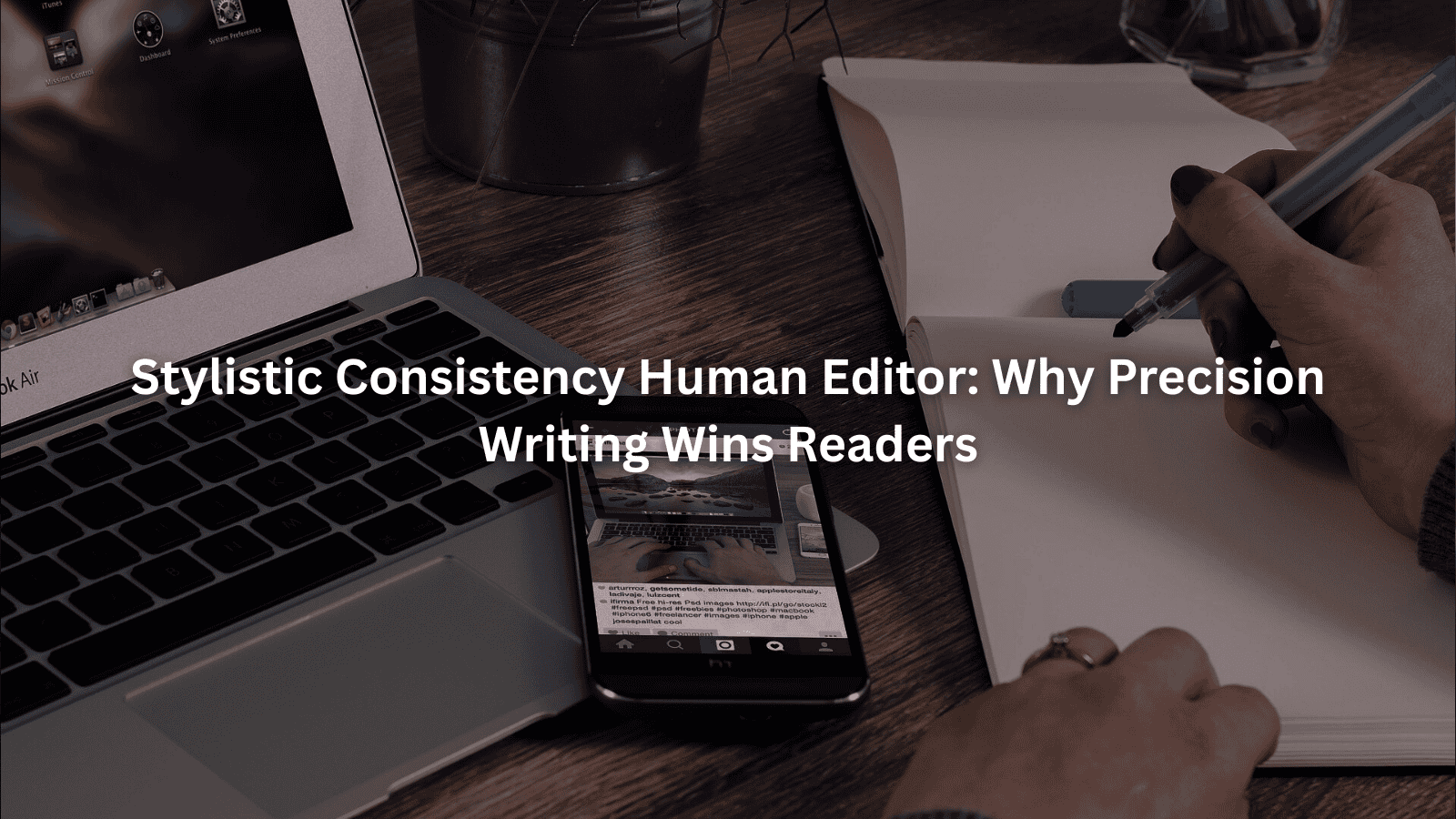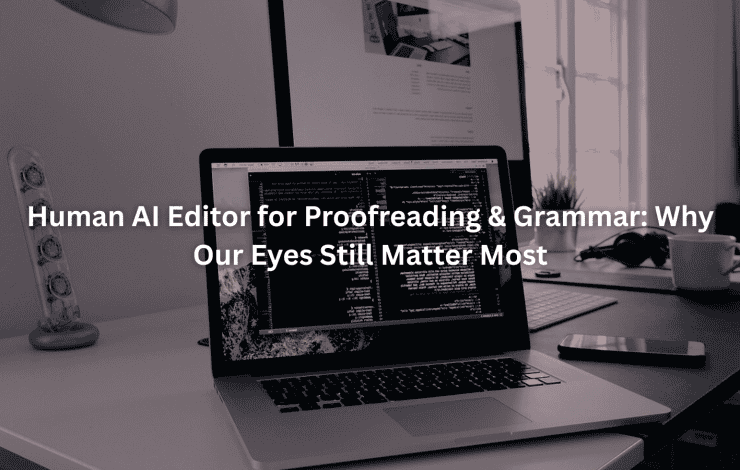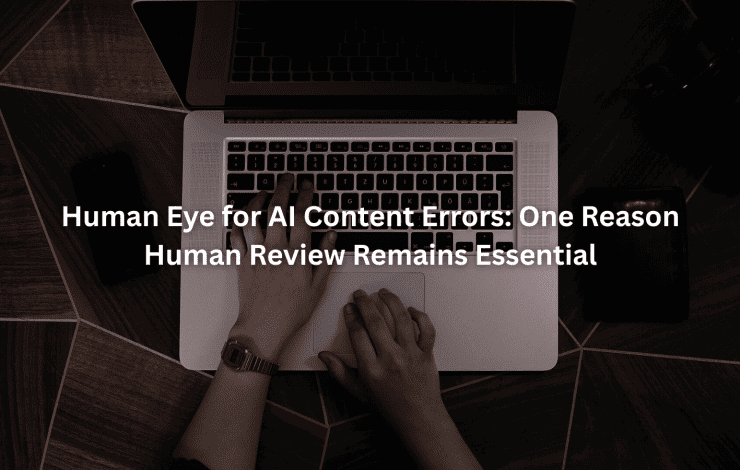Use a consistent writing style from start to finish. Our team always keeps vocabulary and tone aligned to the project’s needs. We check grammar and punctuation for uniformity and clarity. That’s how we keep every text clear, professional, and engaging.
Key Takeaways
- Stylistic consistency ensures your message is clear and keeps readers engaged from the first word to the last.
- A human editor’s judgment bridges the gap between strict rules and authentic voice, protecting originality while polishing for professionalism.
- Using editorial standards and style guides, we deliver content that aligns with your brand and resonates with your audience.
Importance of Stylistic Consistency in Editing
The first thing we notice in any manuscript is the subtle rhythm that runs through a writer’s sentences. Sometimes, it’s smooth. Other times, it jars us like a missed step. That’s the tell of stylistic consistency, or the lack of it.
We’ve seen clients struggle when they jump between formal and informal tones in the same article. Readers get lost. Worse, the text feels fractured, as if written by different people. Human editors like us step in to keep vocabulary, phrasing, and tone regular. Our job isn’t just about fixing errors, it’s about smoothing out bumps so the message rides clean.
We pay attention to:
- Using the same terminology throughout, so readers don’t have to double back and check meanings.
- Making sure the voice doesn’t shift mid-way. If the author starts warm and conversational, that tone has to carry through.
- Checking for sentence structure and phrasing patterns that match from start to finish.
We think this uniformity is what makes writing feel trustworthy. It turns a loose collection of sentences into a story that guides the reader, not confuses them.
Role of a Human Editor in Maintaining Uniformity
We believe style is more than grammar. It’s about how an author’s voice comes through on the page, and how that voice is kept steady. We don’t just rely on checklists. We read, pause, and listen to the text. Sometimes, it means rewriting whole paragraphs for the sake of tone uniformity.
One manuscript we worked on used “utilize” in one section, “use” in another, and “employ” elsewhere. We picked the clearest word and stuck with it. That’s what keeps the text from feeling scattered.
The truth is, machines can catch repeated words, but only a human editor can sense when the tone strays or the context shifts too sharply. A recent article on the ethical limits of AI reminds us: “Context matters more than compliance” [ 1 ]. That’s exactly our point. Grammar rules aren’t enough, you need intuition to keep a narrative steady.
Ensuring Vocabulary and Terminology Consistency
We always scan for terminology. If you call it “customer” in chapter one, we won’t let it become “client” or “buyer” later unless there’s a reason. Consistent vocabulary is the anchor that holds the narrative in place.
Preserving Authorial Voice and Tone Alignment
We know it’s tempting to “tidy up” a writer’s style, but we tread lightly. Our edits shouldn’t erase the author’s personality. We flag tonal shifts and suggest fixes that keep the voice authentic but even.
Impact on Readability and Professionalism
Readers won’t stick with a text that feels like a patchwork quilt. Stylistic consistency is what lets ideas unfold logically and clearly. We’ve seen brand blogs where every post felt different. Readers bounce away. That’s why we work hard to keep everything aligned.
Enhancing Text Clarity and Cohesion
We break up long sentences, clarify ambiguous references, and make sure transitions link ideas. That’s how we keep the narrative flow strong.
Avoiding Reader Confusion Through Style Regularity
We watch for repeated phrases, inconsistent punctuation, and mismatched formatting. It’s the small things, like using both “email” and “e-mail”, that can trip up even the best writers.
Key Elements of Stylistic Consistency

When we talk about stylistic consistency, we’re not only thinking about the words. It’s the tone, the grammar, the way you use punctuation. It’s the rhythm of the text.
Tone, Voice, and Narrative Flow
We’ve edited pieces that started off with a friendly voice and then veered into stiff, academic language halfway through. That’s jarring. We keep track of the tone, whether formal or informal, and make sure it doesn’t wander.
Formal vs. Informal Tone Adaptation
If a client wants a formal tone, we stick to structured sentences and avoid contractions. For an informal blog post, we let things loosen up, shorter sentences, more conversational phrasing.
Maintaining Narrative Voice Consistency
We keep a “voice map” for longer texts, noting down quirks and preferences. This helps us prevent the narrative from drifting.
Grammar, Syntax, and Punctuation Uniformity
Grammar is the backbone. We check for things like verb tense consistency, past tense stays past, present stays present. Sentence structure should feel intentional, not haphazard.
Verb Tense and Sentence Structure Consistency
Switching tenses mid-paragraph confuses readers. We make sure each section matches the intended timeline.
Applying Standardized Punctuation and Capitalization Rules
We set rules for commas, quotation marks, and capitalization at the start. That way, the text looks and reads the same from start to finish.
Formatting and Structural Consistency
Formatting matters more than people think. We once saw a document switch from bullet points to checkmarks mid-list. Small change, big distraction.
Style Guide Adherence and Editorial Standards
We develop or follow a style guide for each project, whether it’s AP, Chicago, or custom. This keeps everyone on the same page.
Paragraph Structure and Textual Rhythm
We believe paragraphs should breathe. We break up long blocks and vary sentence length to keep the rhythm natural and readable.
Strategies for Achieving Stylistic Coherence

Editing isn’t only about following rules. It takes judgment, sometimes compromise, to keep a text both clear and true to its voice.
Editorial Judgment and Subjectivity in Style Editing
We trust our instincts. If a sentence feels off, we check why. Maybe it’s word choice, maybe it’s the order. We know when to step back and when to dig in. There’s a reason we still rely on human judgment, machine grammar tools often miss what a trained editor catches instinctively.
Balancing Clarity with Stylistic Nuance
We’ve had writers who love long, winding sentences. Our job is to trim just enough to keep meaning clear but not so much that we lose their flavor.
Refining Expression While Preserving Voice
We’ll suggest alternatives if the text gets awkward, but we always explain our reasoning. The author’s intent comes first.
Use and Development of Style Guides
A good style guide is like a map. We build one if it doesn’t exist. Otherwise, we adapt the client’s existing rules to fit the project.
Adapting Style Guides to Specific Projects
Every text has its quirks. We tailor the guide, maybe more technical for a white paper, more relaxed for a lifestyle blog.
Ensuring Consistent Style Synchronization Across Texts
We keep notes on each project. That way, if we handle a series of articles, they all sound like they come from the same pen.
Techniques for Smooth Narrative Flow
We’ve learned that flow is more than transitions. It’s how ideas stack and lead from one to the next.
Logical Organization and Transition Usage
We reorder paragraphs when needed. We add transition phrases, so readers don’t feel jarred moving from idea to idea.
Avoiding Abrupt Shifts and Maintaining Writing Harmony
Are You a Digital Agency?
White Label SEO Content Services for Agencies
Scalable, customizable, and results-driven content solutions for your clients.
We flag sudden changes in topic, tone, or pacing. Sometimes, a simple rewrite is all it takes to make the narrative sing.
Enhancing Text Quality Through Stylistic Editing

Our best work happens when we make the writing feel effortless, smooth, connected, and lively. That’s what builds trust and keeps readers coming back.
Improving Engagement and Credibility
Readers know when a piece has been polished by a human editor. It feels intentional, professional, and credible. Even the most polished AI-generated text benefits from human proofreading because readers can sense when content has been shaped by real experience.
Even readers outside the industry can tell the difference. A popular guide on how to spot AI-generated text notes that machine writing often lacks “emotional depth, human-like phrasing, and consistent tone” [ 2 ]. These are precisely the qualities we preserve in every draft.
Creating Cohesive and Polished Prose Style
We trim redundancies, clarify fuzzy ideas, and make sure every sentence carries its weight.
Tone Modulation to Suit Audience and Purpose
Our edits reflect the intended audience. We dial up the energy for marketing copy, keep it measured for technical documents.
Feedback and Revision Processes
We don’t edit in a vacuum. Feedback is part of the process. We discuss, debate, and refine until the text feels right. Our editing workflow blends editorial expertise with technology, especially when it comes to ensuring grammar accuracy, we pair human insight with smart AI tools to sharpen every draft.
Providing Stylistic Feedback for Clarity of Expression
We give specific notes on word choice, phrasing, and transitions. We point out where the tone slips or where the flow breaks.
Editorial Polish to Maintain Stylistic Integrity
Our final pass is all about polish. We check for overlooked inconsistencies, awkward sentences, and formatting quirks. That’s how we protect the text’s integrity.
Need a Strategic SEO Content Partner?
Let’s craft SEO content that ranks, converts, and grows your brand.
Talk to UsWe know what it takes to keep style consistent, patience, sharp eyes, and a willingness to listen to both the author and the audience. If you want writing that feels seamless, readable, and professional, a human touch is essential. At Jet Digital Pro, we combine our editorial experience with smart technology, making sure your content stands out for all the right reasons. If your agency needs scalable, white-label editing or writing that stays true to your brand, let’s talk. We’ll help you get there, one consistent sentence at a time.
FAQ
How do human editors handle subtle shifts in tone across collaborative writing projects?
When several writers work on one project, the tone can shift without anyone noticing. Human editors watch for these changes, reading for voice and phrasing patterns. We’ll flag spots where one section feels warmer or stiffer than the rest. Then, we revise or suggest edits to bring everything back in line, so the reader gets a seamless experience from start to finish.
Can stylistic consistency still allow for creative expression in a manuscript?
Absolutely. Stylistic consistency doesn’t mean every sentence must sound the same. Instead, we look for a steady rhythm and voice that fits the author’s intent. We keep an eye out for unique expressions, making sure they fit naturally. Our edits aim to balance creativity with clarity, so the writer’s voice comes through but never confuses the reader.
What happens if a client’s preferred style guide conflicts with their usual writing habits?
We’ve seen that happen often. If a client’s style guide says one thing but the draft shows another habit, we talk it through. Sometimes, we adjust the style guide for the project or explain why a certain change helps the text. Our goal is to find a middle ground: keep the client’s voice but ensure consistency for the reader.
How do editors maintain consistency in long-form content like white papers or e-books?
With longer texts, small inconsistencies can slip by. We keep detailed notes and even a style checklist as we edit each section. We review earlier chapters while working on later ones, making sure terminology, structure, and tone match throughout. Sometimes, we reread the entire text one last time just to catch anything that doesn’t fit.
Are there limits to how much a human editor should standardize stylistic elements?
There are. We believe too much standardization can flatten a unique voice. Our job is to smooth out distractions, not erase personality. We’ll fix what breaks the flow or confuses the reader, but we leave room for quirks and style choices. The best writing feels both polished and personal, not like it was run through a machine.
Conclusion
Stylistic consistency isn’t about rigid rules, it’s about earning trust through clarity and cohesion. At Jet Digital Pro, we turn scattered drafts into unified, polished content with an 11-step human editing process that blends rhythm, voice, and precision. Whether it’s blog writing, ethical link building, or full SEO content management, our editors help your agency deliver work that feels seamless and professional at scale.
Want content that speaks with one voice? Let’s talk »
References
- https://moderndiplomacy.eu/2025/06/04/ethics-in-the-age-of-ai-why-context-matters-more-than-compliance/
- https://learn.g2.com/was-this-written-by-ai
Related Articles
- https://jetdigitalpro.com/human-ai-editor-for-proofreading-grammar/
- https://jetdigitalpro.com/human-editor-vs-ai-grammar-tool/
- https://jetdigitalpro.com/human-proofreading-ai-generated-text/
P.S – Whenever you’re ready,
we’re here to help elevate your SEO content.
Partner with us for strategic, scalable content that drives real organic growth.
Contact Us Now




